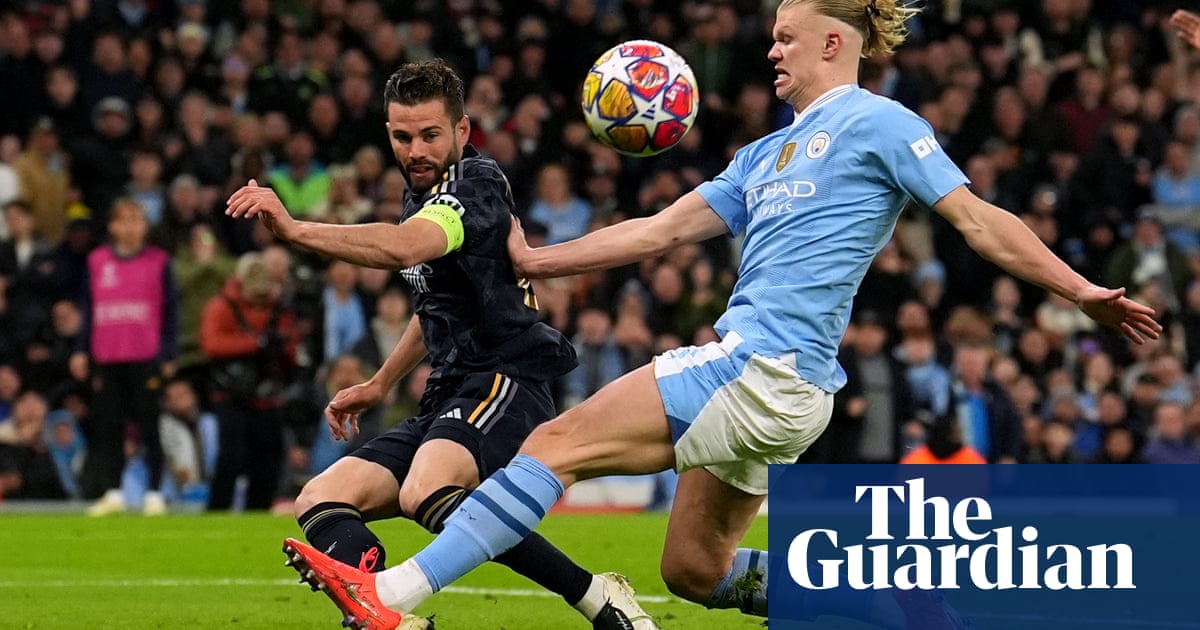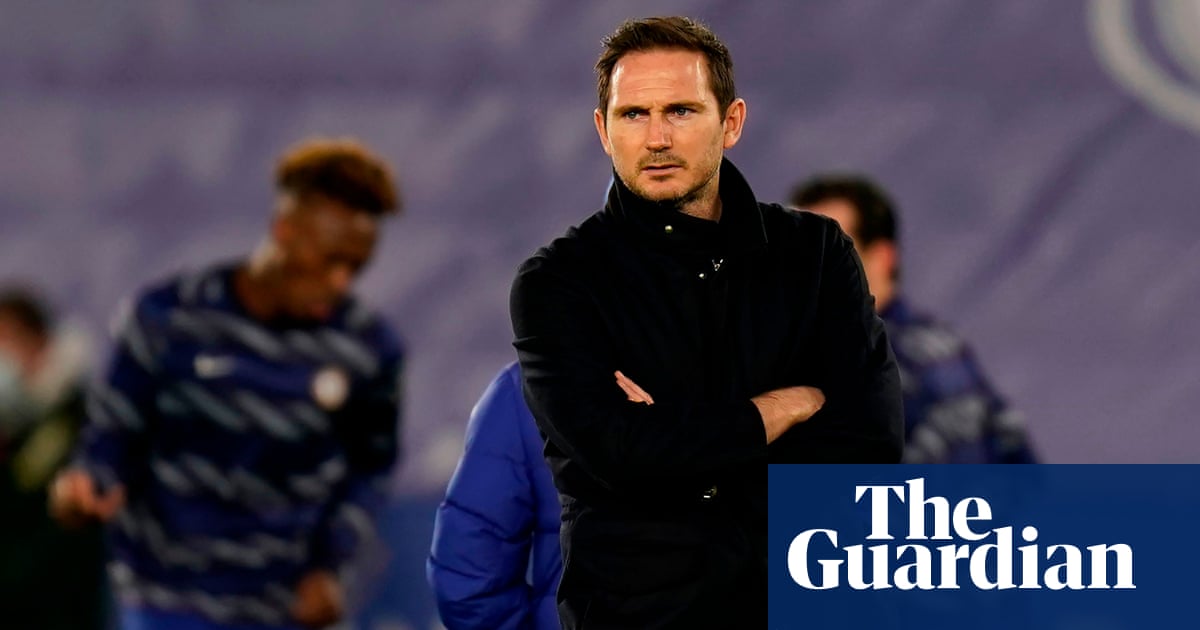
As Chelsea and Tottenham contemplate Sunday afternoon at Stamford Bridge and the latest instalment in their own sub-epic two-hander, it is tempting to see another example of the Trigger’s Broom thesis, the search for the essence of things. Change the stadium, change the vibe, change the recruitment. Change the manager (key detail: get one who likes holding up trophies). Change the objective level of expectation. Is this thing still Spurs?
Or at least, is it still Spurs in that defining performance mode? Can this team be expected to defeat high-level opponents when victory matters most; or conform to muscle memory, romping proudly on those delicate foal-like legs before collapsing in a whirl of hooves whenever the prospect of actual success looms into view?
The same feeling of flux is of course present at Chelsea and in a far more profound way. It is still hard to take in the full brain-boggling extent of what has happened in the last six months to the most transformative presence of the English football century. For two decades the real marvel of Chelsea’s winning machine was its constancy, the way head coaches came and went, a different face, different coat, a different way of standing; but still some binding thread of cold, hard sporting will (and £1.5bn in rolling loans) kept this super-yacht surging on.
That 20-year project has now been stripped not just of its bottomless pockets but of every member of the club hierarchy responsible for running the business. Is it still Chelsea? What is Chelsea exactly? Is a self-publicising bro-billionaire in Ringo shades really any different to an inscrutable oligarch in designer double denim? Where will we feel the ripples, the altered angles? It is of course too early to tell, although the signing of Raheem Sterling is a clear statement of sustained elite ambition.
Still, though, a meeting of Spurs and Chelsea at this stage is brilliantly poised, if only because these clubs have tended to define one another’s progress over the last decade, to become a touchstone – not quite a mega-derby or a clásico, but at the very least a source of profound mutual irritation.
Chelsea have dominated this relationship, the biggest single player in the idea of Spurs as almost-theres and not-quites. The Abramovich years were basically a riot on this front, taking in a decade-long unbeaten run against their (north London version) most hated opponents, a 6-1 win at White Hart lane, an ongoing 11-match streak with just one Carabao Cup penalty shootout defeat, and the sense of existing in some other place, a distinct VIP lane.
And now we have this, a meeting of clubs seeking new forms, new patterns. Spurs lost four times to Chelsea last season and Antonio Conte was visibly distressed by the three he was in charge for. Victory now really would represent progress. And there is hope here for Spurs, for one obvious reason. For the first time in quite a lot of time Tottenham have a better attack than Chelsea: more options, more edge, more goals. And this is significant for other reasons too.
In reality the gap between these two clubs was never based in omens, portents, bad energy, some kind of ancient warlock’s curse. Spurs have simply had a thinner squad, have recruited poorly, have spent less than Chelsea (by no means an exclusive club) and have played without a genuine back-up centre-forward for the last eight years.
This is not anything to do with a curse or a lack of backbone. It is instead hard commercial design, the reality of trimming your resources to meet the demands of building a new stadium. It feels as thought this might be about to change. Forget culture, vibes, the lily-livered whites. There is some genuine latticing depth and variation here. The team of Drogba, Hazard, Costa, Anelka. Spurs have got them covered right now.
Even in the occasional stumbles of last season, even with Romelu Lukaku wandering about up front like the first man to walk on Pluto, Thomas Tuchel’s team was so orderly, goals were still spread about the team, with Mason Mount top scorer with 11.
Since then, Lukaku and Timo Werner have left. Sterling and Armando Broja look fine replacements on paper; one of them, Sterling, a serious upgrade, and the most reliable scorer in the squad even before his first Chelsea goal. Otherwise Kai Havertz, Mount, Hakim Ziyech and Christian Pulisic have 61 goals in 284 Chelsea league games combined.
Whereas Spurs have Harry Kane, who gets 17 a season even when he’s playing with a migraine, a grudge and a dicky ankle; Son Heung-min, who is a golden boot winner; Dejan Kulusevski, a really fine prospect at 22; and Richarlison, who starts for Brazil but who is currently looking on from the bench wondering how he’s going to barge his way into this thing.
It feels like the right place to build from, if only because it is in their attacking hand, a succession of pressed men and might-yet-bes, that classic Spurs fatalism, the Spursiness of Spurs, has manifested itself.
From the great days of the Soldado confusion, to the cheerful but unshakably rustic Grzegorz Rasiak, through a fever dream of Fernando Llorente to the ceaseless churn of Bergwijn-Ndombele-Gil and the rest, Tottenham’s attack has been based around hope and what-ifs. This has been a very basic version of Moneyball where no money is actually made and very little that is memorable happens with the ball.
Advertisement
Richarlison is a significant step up in this respect, a forward who is so much better than his most ineffective Premier League days would suggest, and who provides an interesting tactical contrast with the players already present. Surprisingly perhaps, the 25-year-old’s goalscoring record in the last 18 months is almost identical to that of Kane. He lacks Kane’s passing and creative vision, his playmaking verve. He plays wider, does more defensive running, makes more tackles and interceptions, offers another point of speed in attack.
For Brazil, Richarlison has played centrally as a false No 9, or a mobile 9.5. Perhaps the essence of the journey from challenger to contender is finding a model where Kane can finally be rotated out now and then for fitness reasons, or just so the team can attack in a different way.
Conte is nothing if not ruthless. He knows this is what the best teams do; that the difference between winning edge and being “in the middle” is not curses or hexes, the twanging needle of the Tottenham ouija board, but resources, the ability to constantly whet the attacking blade.
Superstition may dictate that there is no more certain way of ensuring Spurs fire blanks on Sunday than by praising their attack. But the fact remains those four gun attacking players are a match for anything outside Anfield and the Etihad this season. There are no excuses now. In a rare break from the majority of his profession, this is exactly the way Conte likes it.












